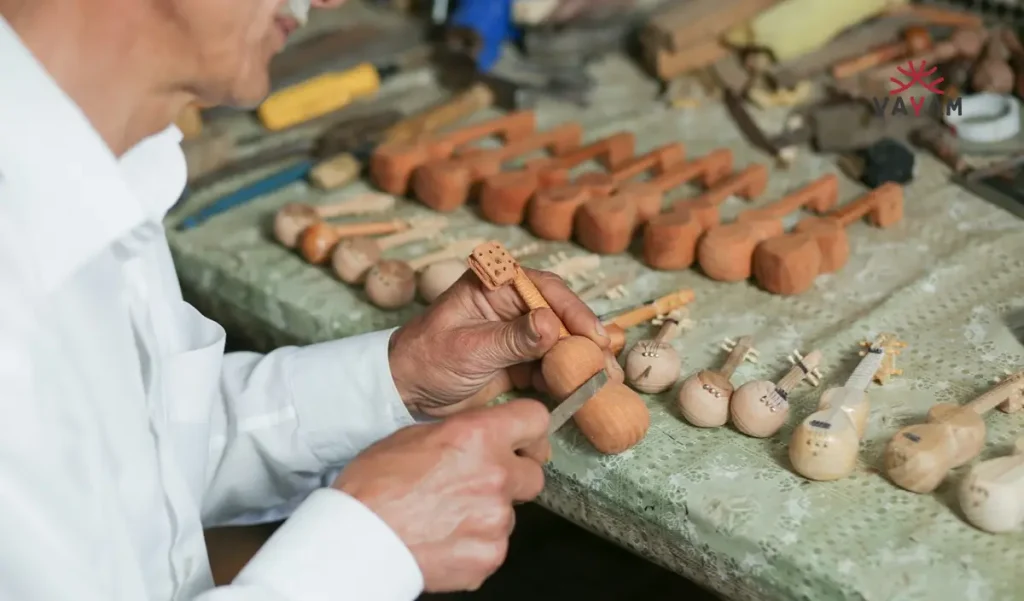
In India, the Mahatma Gandhi National Rural Employment Guarantee Act (MGNREGA) has played a pivotal role in supporting rural livelihoods and community development. One of its lesser-known yet profound impacts has been in reviving dying handicraft industries across the country. This blog explores how MGNREGA has become a lifeline for artisans, breathing new life into traditional crafts that were on the brink of extinction.
Understanding the Plight of Handicraft Industries
Handicrafts have long been a cornerstone of India’s cultural heritage and economic diversity. However, in recent decades, many traditional artisans have faced significant challenges. Rapid urbanization, changing consumer preferences, and lack of government support have threatened the survival of these ancient crafts. Artisans, often from marginalized communities, struggled to sustain themselves and preserve their cultural identities amidst modernization.
The Impact of MGNREGA on Artisans
MGNREGA, introduced in 2005, guarantees 100 days of wage employment in rural areas, primarily for unskilled labor. While its primary goal is to enhance the livelihood security of rural households, its implementation has inadvertently provided a lifeline to struggling artisans. By offering alternate sources of income during lean periods, MGNREGA has prevented many artisans from abandoning their crafts in search of more stable livelihood options.

Read More
MGNREGA for Women Empowering Female Workers in Rural Areas
How to Find and Support NGOs That Save Girl Children
Case Studies: Success Stories from Across India
- Varanasi’s Silk Weavers: In Varanasi, renowned for its silk weaving traditions, MGNREGA has supplemented the income of weavers during off-seasons. This support has enabled them to continue their craft even when market demand fluctuates.
- Rajasthan’s Pottery Artisans: Traditional pottery making in rural Rajasthan has faced challenges due to competition from mass-produced ceramics. MGNREGA projects have provided pottery artisans with a safety net, allowing them to invest time in honing their skills and creating unique, handmade products.
Challenges Faced by Artisans
Despite its benefits, MGNREGA implementation in the context of handicrafts has not been without challenges. Delayed payments, bureaucratic hurdles, and seasonal nature of employment continue to pose obstacles for artisans relying on the scheme. Lack of awareness about MGNREGA’s applicability among artisans has also limited its reach in some regions.
Solutions and Recommendations
To further enhance MGNREGA’s impact on handicraft industries, concerted efforts are needed:
- Awareness Campaigns: Government and non-government organizations should collaborate to raise awareness about MGNREGA’s benefits among artisans.
- Skill Development Initiatives: Integrating skill development programs within MGNREGA projects can empower artisans to improve product quality and access new markets.
- Streamlined Implementation: Simplifying bureaucratic procedures and ensuring timely payments are crucial to maintaining artisans’ trust in the scheme.

Future Prospects
Looking ahead, the role of MGNREGA in supporting handicraft industries remains promising. By addressing socio-economic challenges and preserving cultural heritage, MGNREGA continues to be a catalyst for sustainable development in rural India. As awareness grows and implementation improves, more artisans can benefit from this transformative initiative, ensuring the resilience and vitality of India’s diverse handicraft traditions.
Conclusion
In conclusion, MGNREGA stands as a beacon of hope for artisans across India’s rural landscape. By providing a safety net during economic uncertainties and preserving traditional craftsmanship, MGNREGA not only supports livelihoods but also enriches the nation’s cultural fabric. As we navigate towards a more inclusive and sustainable future, the role of MGNREGA in reviving dying handicraft industries remains indispensable.
This blog has aimed to highlight the significant impact of MGNREGA while maintaining a conversational tone and ensuring clarity for the reader. By understanding the challenges faced by artisans and proposing viable solutions, we hope to inspire action towards a more equitable and vibrant future for India’s handicraft sector.
